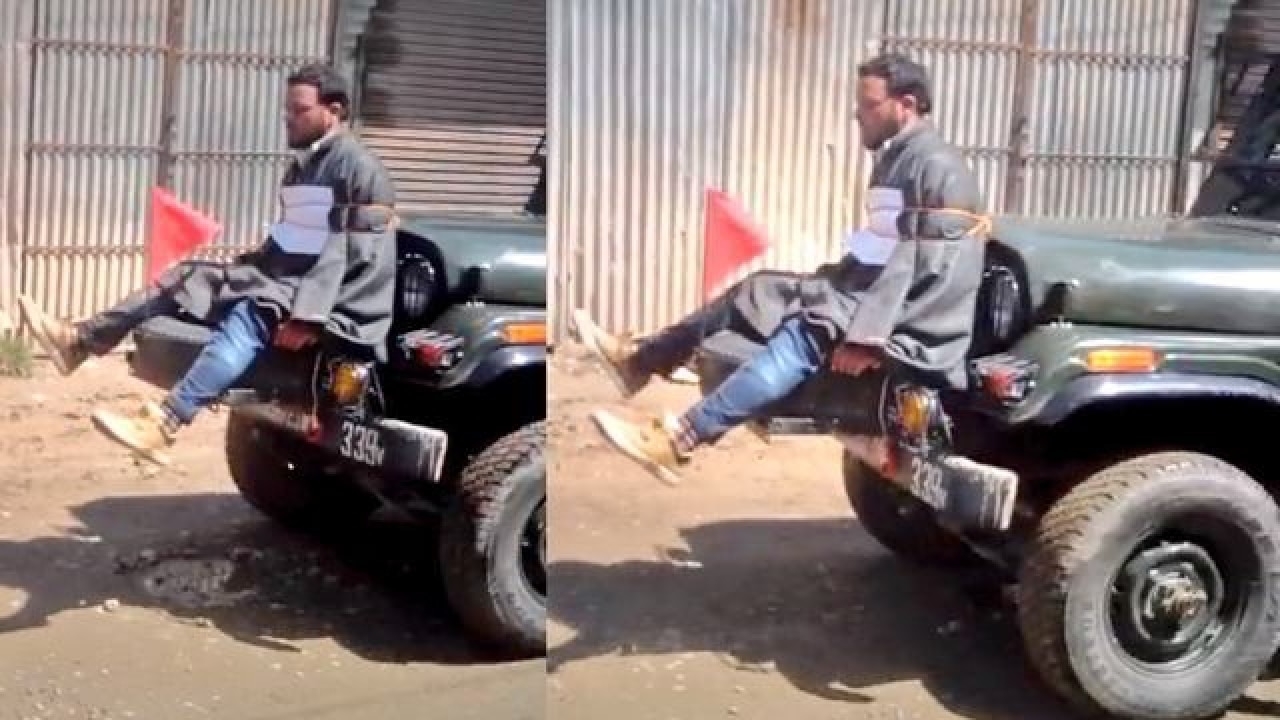
The Army has ordered an inquiry into the incident regarding responding to an SOS from the trapped security personnel and election staff at a polling booth in Budgam in Jammu and Kashmir on April 9.
A military contingent arrested an alleged stone-pelter. He was tied to the bonnet of a military vehicle and was used as a “human-shield” to rescue over a dozen security personnel and election officials from an angry stone-pelting mob. The said man was later released.
Human rights organisations, a few politicians, and activists have termed the incident outrageous, and raised a hue and cry, forcing the government to conduct an inquiry and punish the wrongdoer. In due course of time, a retired judge charged with the responsibility of holding an inquiry into the incident may, while sitting in a dak bungalow, question the army personnel quoting provisions of the Geneva Conventions, to which India is a signatory. He may even question them on the fundamental tenets of the laws of armed conflict: military necessity, distinction, proportionality, precaution, and the prevention of unnecessary suffering. He will never question individuals whether they had the right under the Constitution to throw stones at security forces.
Let us consider another incident. On November 2, 2014, a suicide bomber targeted visitors returning after the flag-lowering ceremony at Wagha on the Indo-Pakistan border. The blast occurred a few hundred metres on the Pakistani side of the border, killing nearly 70 and injuring another 200 civilians. A few Pakistan-based terrorist outfits claimed responsibility for the attack and an alert was issued in India too. The very next day, two civilians were killed and two others critically injured in the Chattargam area in Budgam, when army men opened fire on the vehicle in which they were travelling. The army regretted the loss of innocent lives, but added that the vehicle did not stop at two checkpoints and kept speeding. The National Human Rights Commission issued a notice to the defence ministry and the Superintendent of Police, seeking reports on the matter. While investigating the matter they may ask the army men why they did not aim at the tyres to stop the vehicle. Before jumping to conclusions, our enlightened judicial authorities must remember that a vehicle with flat tyres can travel a couple of hundred metres, and if laden with explosives, could create havoc.
A soldier deployed in such situations always faces a dilemma about the use of force. The legal classification of a particular situation determines the law which governs the actions, rights, and obligations of those involved. While military analysts have tried to define terms like low-intensity conflict, insurgency, militancy, and operations other than war, these are really one and the same thing for a soldier who faces the situation on the ground. No military can draft rules of engagement for different situations. Understanding how the various terms used translate into practice on the ground is a challenging task for a man in the midst of the situation. He has to decide on whether to ‘kill’ an intruder or risk the lives of comrades and civilians in a fraction of a second. There have been a number of instances the world over in which the police/military have used lethal force against individuals who failed to respond to a warning.
The use of a human-shield by the military in Budgam to avoid casualty was, perhaps, one method to deal with the extraordinary situation. The tactics are not new; Israeli military has used such measures in the past to protect civilians and others from Palestinian stone-pelting. More innovative tactics could be used by the police and military personnel in the future. The emerging security environment is radically different from what it was even two decades ago. Geneva Conventions, drafted in 1949, could never envisage such situations. Who could have imagined that few terrorists would hijack a passenger-laden airliner and use it to destroy the World Trade Centre in the US?
It is a fallacy to think that India’s Constitution confers only rights and imposes no duties. The citizens have certain constitutional duties towards the state. They are to defend the country and are bound to uphold its sovereignty, unity, and integrity. They are also to safeguard public property and abjure violence. So when there is a high alert in a certain area and the forces have been tasked to protect their rights against violators, all citizens have a corresponding duty to help the security forces in their mission. A soldier on the ground cannot take a chance, particularly when the enemy remains faceless and fiercely lethal. While the death of every civilian is regrettable, the civil society has to understand its duty towards the country.
Our soldiers are human beings; they must have human rights. We need to pay more attention and support for an expanded range of the rights of soldiers. Recent judgments in Britain’s highest courts have extended the human rights of soldiers in the battlefield and military camps abroad. In order to arrest and detain non-state actors in a conflict zone, a soldier should not be expected to comply with peace-time standards such as those exercised by a civilian police force. Many legal luminaries, human rights organisations and activists grant rights to an insurgent or to a fleeing bank robber than to soldiers who are trying to do their assigned task. With the terrorist camps operating across the line of control and attempting to destabilise our country, it has become all the more necessary for the civil society to support the security forces.
The author is a retired Wing Commander.